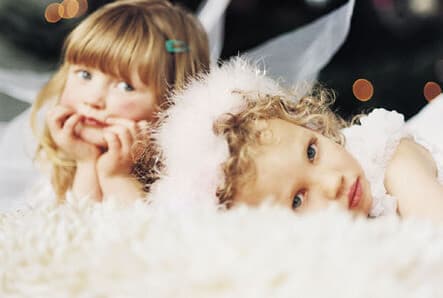The Difference between Colds and Allergies

Question
If a child has cold symptoms that go on and on, is it really allergies? Or is it just one long cold? Or several colds, back-to-back? This is especially difficult in the spring when all the flowers and trees are in bloom. Are the treatments the same? Either way the symptoms are miserable!!!
Shirley - Mill Valley, California
Dr. Greene's Answer
Let’s begin by considering together the birds and the bees…
Pollen is used by plants to reproduce. Come springtime, many plants dress themselves with beautiful, vibrant flowers in an effort to attract birds and bees. These curious visitors carry the pollen from flower to flower, and magic happens.
Many less flashy plants use a different strategy to reproduce. Grasses, weeds, and trees often make smaller, lighter, grains of pollen and depend on the wind to scatter it widely. This windborne pollen, not that produced by flowers, is responsible for most hayfever symptoms.
During their mating season, some trees pump out millions and millions of grains of pollen each day. On dry days after the spring rains, the pollen count is at its highest — especially on windy days.
The lining of our noses contains tiny guardians called mast cells, whose purpose is to protect us from harmful particles in the air we breathe. People with allergies have hypersensitive mast cells that sound the alert in response to relatively harmless particles such as pollen, dust, or pet dander.
When pollen sticks to the membrane of a mast cell of someone with pollen allergies, the cell begins to swell and swell. Finally the mast cell bursts, spilling histamine and many other potent chemicals into the surrounding tissue. These produce the sneezing, swelling, itching, and congestion associated with allergies.
Parents often ask me whether their children’s constantly runny noses are the result of allergies, sinus infections, or of one cold after another. Allergies typically feature a clear nasal discharge with sneezing. There may be itchy, watery eyes and/or a dry cough. Often parents notice a “rabbit nose” — a child crinkling her nose to relieve the itchy sensation inside. The “allergic salute” — rubbing the nose with the hand, sometimes leaving a horizontal crease on the nose — is another common sign. “Allergic shiners” — dark circles under the eyes — have long been associated with allergies, but are less predictive than the other symptoms. Often there is a family history of allergies.
Colds will often begin with a clear nasal discharge, but after several days it usually turns creamy, yellow, or green for a time. Symptoms typically start suddenly and resolve within 7 to 14 days. Sneezes tend to be more productive, and coughs sound wetter than with allergies. If the eyes are involved, one or both of them usually turn pink, with a discharge that matches that in the nose. A fever may be present. Often people in close contact with the child have similar symptoms.
A sinus infection in a child often begins like a cold but lasts for greater than 10 to 14 days with no period of improvement. Sometimes a sinus infection begins with a high fever (>103 F), facial swelling, or facial pain.
Since children with allergies often get more colds, sinus infections, and ear infections than their counterparts, it can be difficult to tease apart what is going on. The experience of other family members offers a big clue. Allergies often run in families. Eczema and asthma are also more common in allergic families.
What if your child does have allergies?
Walking into a drugstore, you are confronted with an overwhelming display of brightly packaged allergy products, each promising greater allergy relief than its neighbors. Many of these products can actually harm your child and make the effects of allergies even worse. The right choices, however, used in the right ways, can dramatically improve your child’s springtime.
I will guide you through the confusing maze of home allergy treatments for your child.
In the meantime, “gesundheit!”


